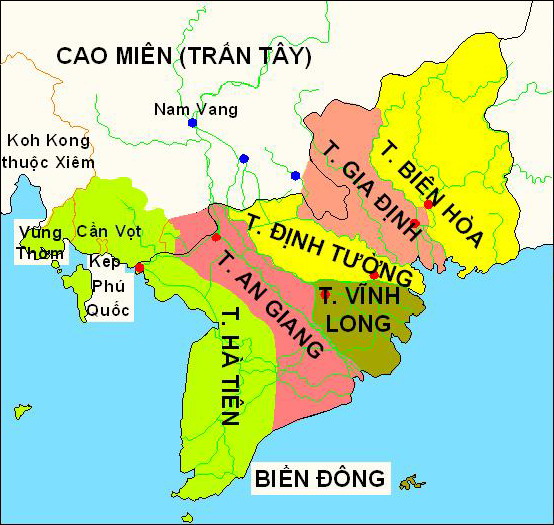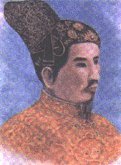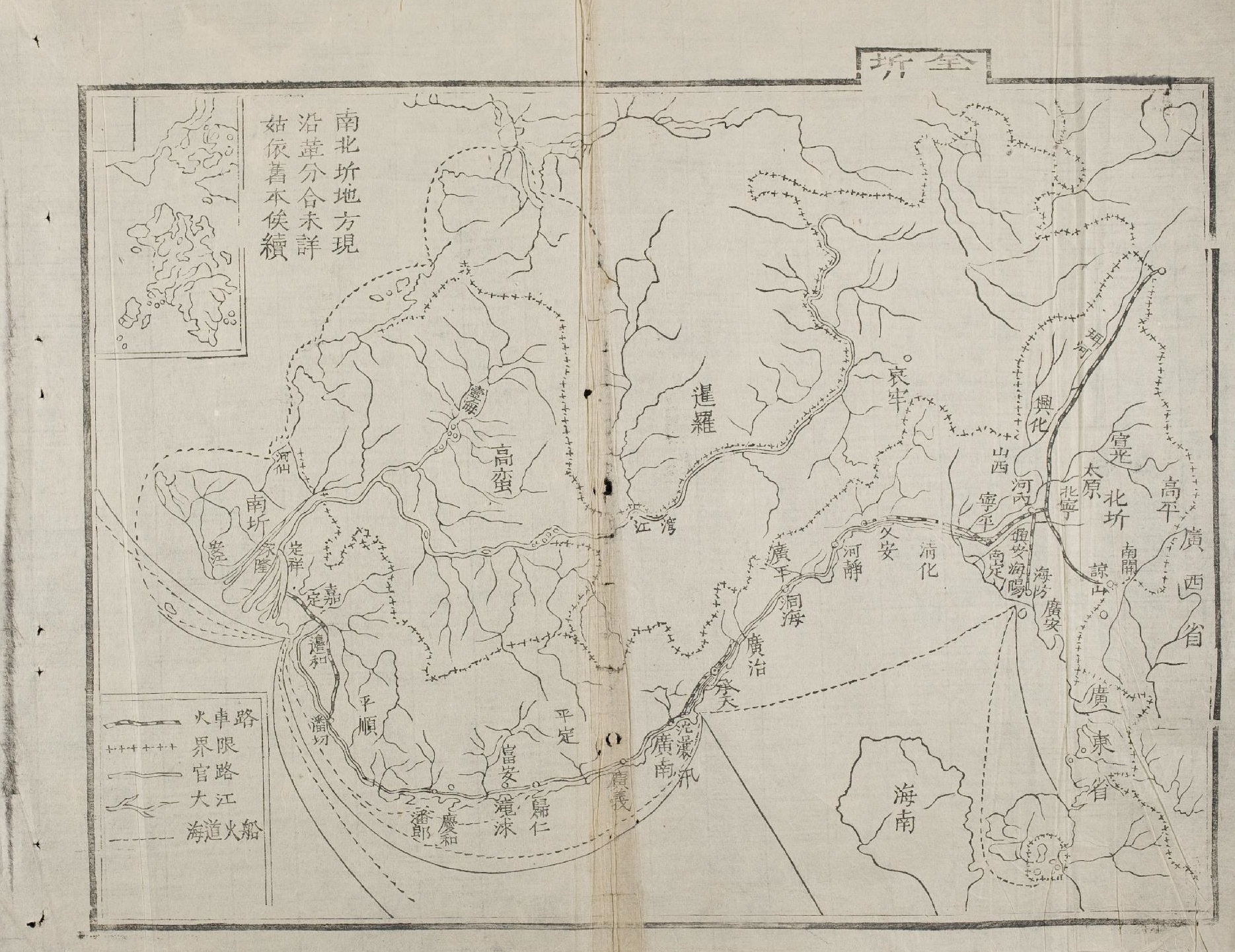|
Six Provinces Of Southern Vietnam
The Six Provinces of Southern Vietnam (''Vietnamese:'' Nam Kỳ Lục tỉnh, 南圻六省 or just Lục tỉnh, 六省) is a historical name for the region of Southern Vietnam, which is referred to in French as Basse-Cochinchine (''Lower Cochinchina''). The region was politically defined and established after the inauguration of the Nguyễn dynasty, and called by this name from 1832, when Emperor Minh Mạng introduced administrative reforms, to 1867, which culminated in the eight-year French campaign to conquer the Six Provinces. The six provinces, which in 1832 Emperor Minh Mạng divided Southern Vietnam into, are: * Phiên An, later changed name to Gia Định (provincial capital city: Sài Gòn), * Biên Hòa (provincial capital: Biên Hòa), * Định Tường (provincial capital: Mỹ Tho) * Vĩnh Long (provincial capital: Vĩnh Long), * An Giang (provincial capital: Châu Đốc), * Hà Tiên (provincial capital: Hà Tiên). These provinces are often subdivided ... [...More Info...] [...Related Items...] OR: [Wikipedia] [Google] [Baidu] |
Châu Đốc
Châu Đốc is a city in An Giang Province, bordering Cambodia, in the Mekong Delta region of Vietnam. As of 2013, the city had a population of 157,298, and cover an area of . The city is located by the Hậu River (a branch of the Mekong River flowing through Vietnamese territory) and Vĩnh Tế canal. Châu Đốc is situated west of Ho Chi Minh City. It takes about six hours to travel by bus from Ho Chi Minh City. History The territory became Vietnam's around the 17th century. The town is near the picturesque Sam Mountain where the Sam Mountain Lady (Vietnamese: Bà Chúa Xứ Núi Sam) is worshipped. The Sam Mount Lady Ceremony is held every April of lunar calendar (May) every year. Floods caused devastation in the region, the one in late 1938 saw 125,000 hectares of ruined riceland due to floods. In 1957, the town was the site of the Châu Đốc massacre. Climate Châu Đốc has a tropical savanna climate ( Köppen ''Aw'') with a lengthy though not extreme wet seaso ... [...More Info...] [...Related Items...] OR: [Wikipedia] [Google] [Baidu] |
Lê Văn Khôi
( vi-hantu, 黎文 ; died 1834) was the adopted son of the Vietnamese general Lê Văn Duyệt. He led the 1833–1835 Lê Văn Khôi revolt against Emperor Minh Mạng, but died in 1834. As Duyệt was being prosecuted and his relatives condemned, Khôi had been imprisoned, but managed to escape on May 10, 1833. Soon, numerous people joined his revolt, in the desire to avenge Duyệt and challenge the legitimacy of the Nguyễn dynasty The Nguyễn dynasty (chữ Nôm: 茹阮, vi, Nhà Nguyễn; chữ Hán: 阮朝, vi, Nguyễn triều) was the last Vietnamese dynasty, which ruled the unified Vietnamese state largely independently from 1802 to 1883. During its existence, ....Wook, p. 95. Khôi fortified himself into the Citadel of Saigon and asked for the help of the Siamese. Khôi died in December 1834 during the siege and was succeeded by his 8-year-old son Lê Văn Cù.Chapuis, p.192 The Citadel fell in September 1835, and Cù was tortured and executed, together ... [...More Info...] [...Related Items...] OR: [Wikipedia] [Google] [Baidu] |
Nguyễn Đình Đầu
Nguyễn Đình Đầu (born March 12, 1920 in Hanoi Hanoi or Ha Noi ( or ; vi, Hà Nội ) is the capital and second-largest city of Vietnam. It covers an area of . It consists of 12 urban districts, one district-leveled town and 17 rural districts. Located within the Red River Delta, Hanoi is ...) is a Vietnamese historian. Đầu's researches include the early history of Saigon. He turned 100 in March 2020. References {{DEFAULTSORT:Nguyen, Dinh Dau 1920 births Living people Men centenarians Vietnamese centenarians 20th-century Vietnamese historians ... [...More Info...] [...Related Items...] OR: [Wikipedia] [Google] [Baidu] |
Citadel Of Saigon
The Citadel of Saigon ( vi, Thành Sài Gòn ) also known as the Citadel of Gia Định ( vi, Thành Gia Định ) was a late 18th-century fortress that stood in Saigon (also known in the 19th century as Gia Định, now Ho Chi Minh City), Vietnam from its construction in 1790 until its destruction in February 1859. The citadel was only used once prior to its destruction, when it was captured by Lê Văn Khôi in 1833 and used in a revolt against Emperor Minh Mạng. It was destroyed in a French naval bombardment as part of the colonization of southern Vietnam which became the French colony of Cochinchina. In the late 18th century, the city of Saigon was the subject of warfare between the Tây Sơn dynasty, which had toppled the Nguyễn lords who ruled southern Vietnam, and Nguyễn Ánh, the nephew of the last Nguyễn lord. The city changed hands multiple times before Nguyễn Ánh captured the city in 1789. Under the directions of French officers recruited for him, a V ... [...More Info...] [...Related Items...] OR: [Wikipedia] [Google] [Baidu] |
Gia Long
Gia Long ( (''North''), ('' South''); 8 February 1762 – 3 February 1820), born Nguyễn Phúc Ánh (阮福暎) or Nguyễn Ánh, was the founding emperor of the Nguyễn dynasty, the last dynasty of Vietnam. His dynasty would rule the unified territories that constitute modern-day Vietnam until 1945. A nephew of the last Nguyễn lord who ruled over south Vietnam, Nguyễn Ánh was forced into hiding in 1777 as a fifteen-year-old when his family was slain in the Tây Sơn revolt. After several changes of fortune in which his loyalists regained and again lost Saigon, he befriended the French Catholic Bishop Pierre Pigneau de Behaine. Pigneau championed his cause to the French government and managed to recruit volunteers when that fell through to help Nguyễn Ánh regain the throne. From 1789, Nguyễn Ánh was once again in the ascendancy and began his northward march to defeat the Tây Sơn, reaching the border with China by 1802, which had previously been under the co ... [...More Info...] [...Related Items...] OR: [Wikipedia] [Google] [Baidu] |
Phủ
Fu () is a traditional administrative division of Chinese origin used in the East Asian cultural sphere, translated variously as commandery, prefecture, urban prefecture, or city. They were first instituted as a regular form of administrative division of China's Tang Empire, but were later adopted in Vietnam, Japan and Korea. At present, only two ''fu'' still remain: the prefectures of Kyoto and Osaka in Japan. The term ''fu'' is currently also used in Chinese to translate the provinces of Thailand, but not those of mainland China, Taiwan or other countries. Meaning ''Fu'' (府) means an office or a command institution. The character appears in the Chinese words for "government" (政府, ''zhėngfǔ'') or "official's residence" (府邸, ''fǔdǐ''), and names of official institutions such as the "Imperial Household Department" (內務府, ''Nèiwùfǔ'') in China or " Office of the President" (總統府, ''Zǒngtǒngfǔ'') in Taiwan. Japanese language uses the Chinese charact ... [...More Info...] [...Related Items...] OR: [Wikipedia] [Google] [Baidu] |
Nguyễn Phúc Chu
Nguyễn Phúc Chu ( vi-hantu, , 1675 – 1 June 1725) was one of the Nguyễn lords who ruled southern Vietnam (Dang Trong) from 1691 to 1725.Anh Thư Hà, Hồng Đức Trần ''A Brief Chronology of Vietnam's History'' 2000 Page 163 "Nguyễn Phúc Tăn was previously wrongly referred to as Nguyễn Phúc Trãn6. Lord Nguyễn Phúc Chu (Quốc Chúa) (1691-1725) Nguyễn Phúc Chu was born in 1675. He was the eldest son of Nguyễn Phúc Thái." During his time in power, he had to deal with a Champa rebellion and the first major war against the Cambodians. Nguyễn Phúc Chu was the eldest son of Nguyễn Phúc Trăn. He gained the throne on his father's early death, at just 15 years old. He took for himself the title ''Tong Quan-Cong'' (Duke of Tong). Early in his reign the Champa ruler of Panduranga (in present-day Ninh Thuận), Po Sot, began a rebellion against the Nguyễn. The revolt was at first unsuccessful and after the Nguyễn army put down the revolt there ... [...More Info...] [...Related Items...] OR: [Wikipedia] [Google] [Baidu] |
Đại Nam Nhất Thống Chí
The ''Đại Nam nhất thống chí'' ( chữ Hán: 大南一統志, 1882) is the official geographical record of Vietnam's Nguyễn dynasty written in chữ Hán compiled in the late nineteenth century. It also contains historical records of military campaigns.Population et développement au Viêtnam 2000- Page 43 "L'Encyclopédie du Dai Nam (Dai Nam nhât thông chi) achevée en 1882 mais composée sans doute très peu de temps avant l'invasion française," References {{DEFAULTSORT:Dai Nam Nguyen dynasty texts ... [...More Info...] [...Related Items...] OR: [Wikipedia] [Google] [Baidu] |
Nam Tiến
Nam, Nam, or The Nam are shortened terms for: * Vietnam, which is also spelled ''Viet Nam'' * The Vietnam War Nam, The Nam or NAM may also refer to: Arts and media * Nam, a fictional character in anime series ''Dragon Ball'' * ''NAM'' (video game), a 1998 PC game * '' The 'Nam'', a Vietnam War comic series by Marvel Organizations and movements * NAM Aidsmap, a UK organization and website formerly named the National AIDS Manual and now often simply aidsmap * National Academy of Medicine, of the US National Academies of Sciences * National-Anarchist Movement, a radical, racist, anti-capitalist, anti-Marxist, and anti-statist ideology * National Anti-crisis Management, a shadow government created in Belarus in October 2020 * National Arbitration and Mediation, a US dispute-resolution provider * National Army Museum, a national museum of the British Army in London, England * National Association of Manufacturers, an industrial trade association and advocacy group in the US ... [...More Info...] [...Related Items...] OR: [Wikipedia] [Google] [Baidu] |
Mekong Delta
The Mekong Delta ( vi, Đồng bằng Sông Cửu Long, lit=Nine Dragon River Delta or simply vi, Đồng Bằng Sông Mê Kông, lit=Mekong River Delta, label=none), also known as the Western Region ( vi, Miền Tây, links=no) or South-western region ( vi, Tây Nam Bộ, links=no), is the region in southwestern Vietnam where the Mekong River approaches and empties into the sea through a network of distributaries. The Mekong delta region encompasses a large portion of south-western Vietnam of over . The size of the area covered by water depends on the season. Its wet coastal geography makes it an important source of agriculture and aquaculture for the country. The delta has been occupied as early as the 4th century BC. As a product of Khmer, Vietnamese, Chinese, and French settlement in the region, the delta and its waterways have numerous names, including the Khmer term Bassac to refer to the lower basin and the largest river branch flowing through it. After the 1954 ... [...More Info...] [...Related Items...] OR: [Wikipedia] [Google] [Baidu] |



